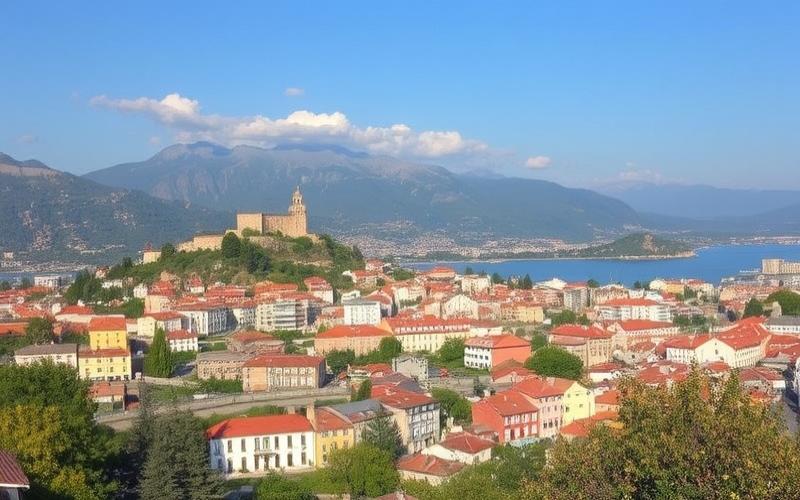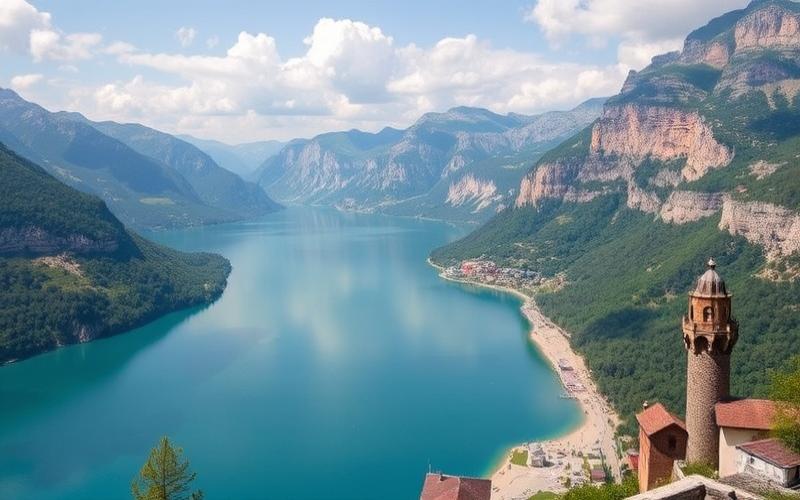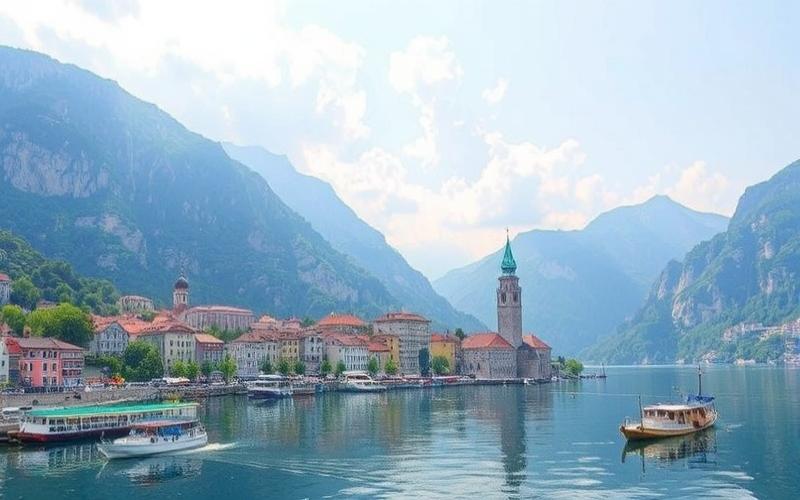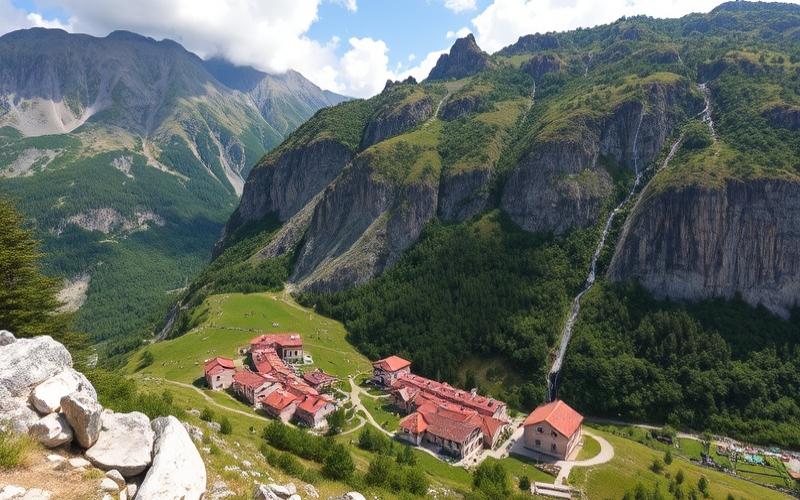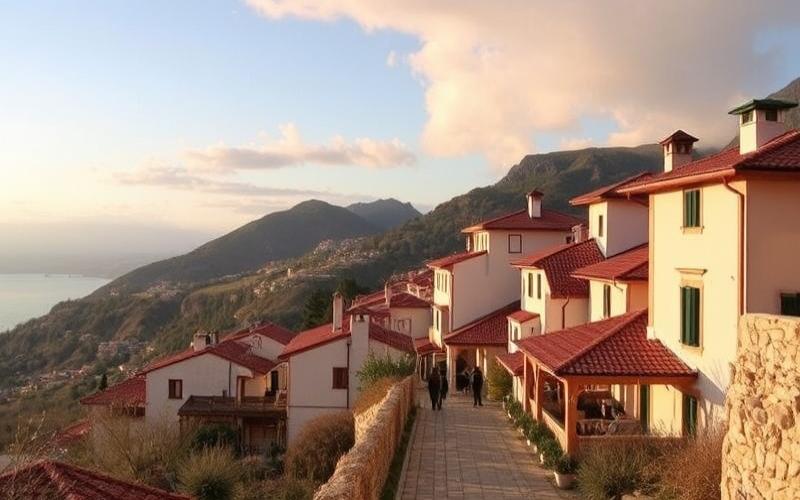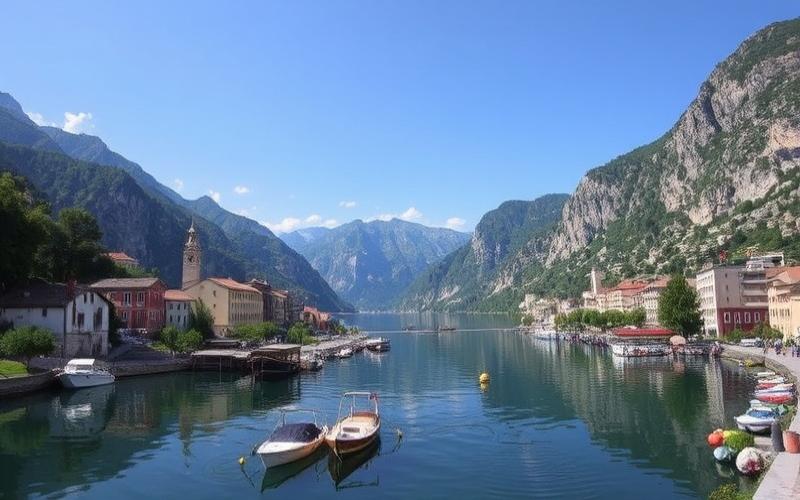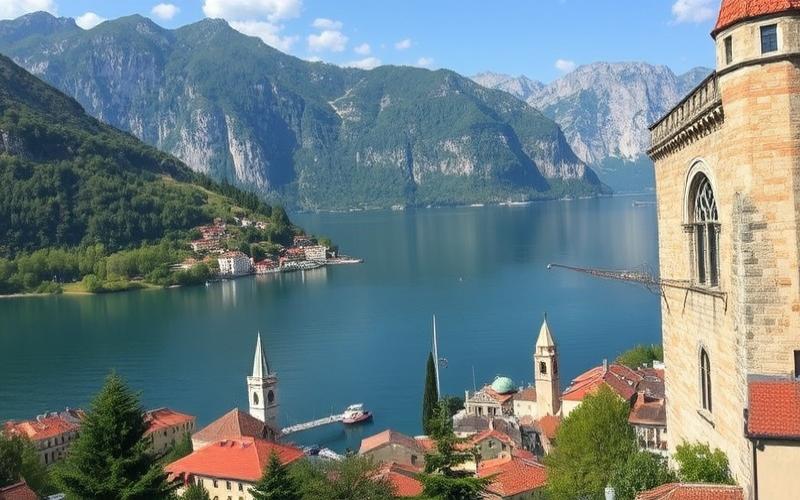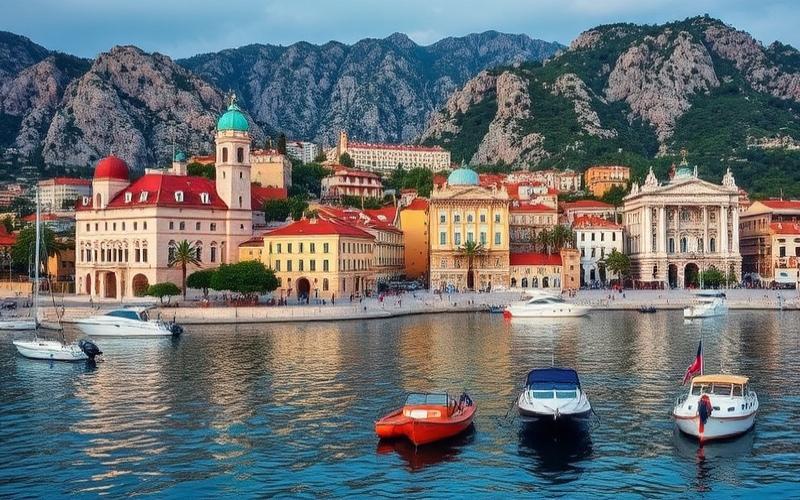
 Published on and written by Cyril Jarnias
Published on and written by Cyril Jarnias
Montenegro Real Estate: An Investment Opportunity
Montenegro, a country experiencing robust economic growth, offers excellent opportunities for savvy investors. With its picturesque landscapes and attractive and dynamic market, this emerging region represents fertile ground for expanding your real estate portfolio.
However, navigating this market can be challenging without a thorough understanding of effective methods to optimize your investments, particularly through the use of financial leverage.
Good to Know:
Financial leverage can not only maximize your return on investment but also minimize the initial capital required, allowing you to capitalize on one of the most promising real estate sectors in the Balkans.
Understanding Leverage in Montenegrin Real Estate
Real estate leverage represents a powerful financial strategy that allows investors to increase their investment capacity by using debt. Specifically, it involves borrowing funds to acquire property rather than using only personal capital. This technique multiplies purchasing power and potentially enhances investment profitability.
In the Montenegrin context, the real estate market presents particular characteristics that make leverage especially attractive. Montenegro, with its appealing coastal landscapes and growing tourism development, attracts numerous international investors. The country has seen significant evolution in its real estate market in recent years, particularly in coastal areas like Budva, Kotor, and the Lustica peninsula.
How Leverage Works in Montenegro
Leverage in Montenegrin real estate functions similarly to other markets: instead of investing only your personal savings, you use a bank loan to increase your acquisition capacity. For example, with €150,000 in savings, you could either purchase a property at this price outright or use this amount as a down payment to acquire a €300,000 property by borrowing the difference.
| Strategy | Initial Capital | Amount Borrowed | Total Investment Capacity |
|---|---|---|---|
| Without Leverage | €150,000 | €0 | €150,000 |
| With Moderate Leverage | €150,000 | €150,000 | €300,000 |
| With High Leverage | €150,000 | €300,000 | €450,000 |
Advantages in the Montenegrin Context
- Access to higher quality or better located properties, particularly in sought-after areas like Kotor Bay
- Ability to acquire multiple properties with the same initial capital, thus diversifying your portfolio
- Potential for higher rental yields due to strong seasonal tourist demand
- Protection against inflation, particularly relevant in an uncertain economic context
- Tax optimization, with Montenegro offering advantageous tax treatment for real estate investors
Specific Risks in the Montenegrin Market
- Real estate market volatility, particularly sensitive to regional economic fluctuations
- Interest rate variations that can affect the profitability of leveraged investments
- Currency risk for foreign investors (Montenegro uses the euro despite not being a eurozone member)
- Evolving legal framework, requiring constant monitoring of regulations
- Seasonality of the rental market, with strong summer demand but potentially low in off-season
Practical Application Example
An investor has €100,000 in savings. Instead of buying a small apartment at this price in Podgorica, they decide to use leverage to acquire a €200,000 apartment in Budva, near the sea. They contribute €50,000 and borrow €150,000 over 20 years.
The property generates annual rental income of €15,000 (mainly during tourist season). Their annual expenses (loan repayment, maintenance fees, taxes, etc.) amount to €10,000. They therefore achieve positive cash flow of €5,000 per year, while benefiting from the property’s potential long-term appreciation.
With the remaining €50,000, they can make a similar investment in a second property, thus multiplying their income sources and wealth.
Practical Tips for Investors
- Collaborate with local experts familiar with Montenegrin market specifics
- Conduct thorough analysis of investment areas (Budva and Kotor offer different yields than Podgorica or Herceg Novi)
- Consider tourist seasonality in rental income projections
- Negotiate favorable loan terms, ideally fixed rates to secure the investment
- Maintain a cash reserve for unexpected expenses and vacancy periods
- Diversify investments between coastal (more touristy) and urban (more stable) areas
- Anticipate regulatory changes related to Montenegro’s EU accession process
Leverage therefore represents a powerful strategic tool for developing real estate wealth in Montenegro, provided you master its mechanisms and adopt a prudent approach adapted to local specifics.
Good to Know:
Real estate leverage involves using loans to finance part of a property purchase, thereby enabling the acquisition of more properties with reduced initial capital. In Montenegro, with a growing market and still attractive real estate prices, this strategy is particularly relevant. It offers investors the opportunity to expand their portfolio without tying up large sums, although this involves risks, particularly market volatility and interest rate fluctuations, which must be managed through careful planning. For example, by investing in a villa on the Adriatic coast, mostly financed by a loan, an investor can benefit from both property appreciation and seasonal rental income. However, it’s recommended to consult local experts and conduct detailed market analyses to limit potential risks, which is vital for success in Montenegrin real estate.
Smart Debt Strategies to Maximize Your Investment
Real estate investors in Montenegro can adopt several smart debt strategies to maximize their returns while controlling risks.
Available Loan Types and Current Conditions
- Montenegrin mortgage loan: Primary banking financing method, accessible to residents and, under strict conditions, to certain foreigners.
- Cash financing: Preferred solution when bank credit is unavailable or to benefit from seller discounts.
- Loan terms: Generally between 15 and 20 years.
- Interest rates (2025): Range between 5% and 7%, depending on the bank, borrower profile, and property type.
- Required down payment: Typically requires 30% to 40% of the property price.
| Loan Type | Foreign Access | Minimum Down Payment | Max Term | Interest Rate |
|---|---|---|---|---|
| Local Mortgage | Limited | 30%-40% | 15-20 years | 5%-7% |
| Cash | Open | N/A | N/A | N/A |
Criteria for Choosing the Best Option
- Legal status (resident or not)
- Interest rates offered by local banks
- Ability to provide substantial down payment
- Wealth objectives (rental investment vs primary residence)
For non-resident investors, obtaining a loan can be complex; it’s therefore advisable to prepare all required documentation in advance (stable declared income, valid passport) or opt for cash acquisition if necessary.
Real Estate Leverage
Smart use of leverage involves financing a significant portion of the project through borrowing to increase market exposure without tying up too much personal capital. In Montenegro:
- Leverage allows investors to:
- Acquire multiple properties more quickly,
- Benefit from attractive rental yields (around 5% to over 8%),
- Potentially benefit from rapid appreciation in dynamic areas.
- To minimize risk:
- Maintain reasonable debt-to-value ratio,
- Ensure rental income comfortably covers annual debt service,
- Keep sufficient financial margin for potential economic fluctuations.
Current Montenegrin Real Estate Market Dynamics
The market remains attractive with sustained demand in tourist rental segments and urban residential areas; this translates to high net yields compared to many other European countries. Administrative processes have been recently simplified to encourage more foreign investment but still require legal caution during transactions.
Practical Tips for Optimizing Real Estate Financial Management
- Systematically compare multiple bank offers before any commitment;
- Essential to work with a specialized local lawyer to secure each contractual step;
- Set aside a buffer fund equivalent to several monthly payments for unexpected events;
- Always prioritize personal budget stability before any speculative operation;
- Regularly reassess your real estate portfolio in light of local regulatory or tax changes;
Thoughtful debt management – combining measured leverage and proactive anticipation – remains a key asset today for fully benefiting from the current dynamism of Montenegro’s real estate sector.
Good to Know:
In Montenegro, savvy real estate investors can leverage smart debt strategies, such as obtaining local mortgage loans offered by major banks at competitive interest rates, currently around 3-4%. It’s essential to choose the loan type based on duration and property project type, for example opting for a variable rate loan if anticipating future rate decreases. In a market where real estate sector growth is driven by increasing foreign demand, it’s crucial to assess price trends to adjust debt strategies. To maximize return on investment while minimizing risks, investors must carefully monitor their debt ratio and include a safety margin for sudden market fluctuations. Proactive payment management, such as making early repayments when possible, can also ensure long-term financial stability.
Calculating Return on Investment Through Leverage
Real estate leverage involves using debt to increase investment capacity and potentially enhance return on invested capital. It’s a key mechanism allowing real estate investors in Montenegro to benefit from market growth while limiting their personal contribution.
Key Concepts Related to Real Estate Leverage:
- Using bank credit to finance a significant portion of real estate purchase
- Maximizing returns through reduced initial investment
- Amplifying gains (or losses) based on price evolution and rental conditions
Return on Investment (ROI) Calculation Process with Leverage:
- Determine total acquisition cost (price, various fees)
- Calculate personal contribution and borrowed amount
- Estimate annual gross then net rental income (deducting expenses, taxes, maintenance)
- Calculate annual interest paid on the loan
- Determine net profitability
Numerical Example Adapted to Montenegro:
| Data | Value (€) |
| Apartment Price | 150,000 |
| Personal Contribution | 30,000 |
| Bank Loan | 120,000 |
| Annual Gross Rent | 9,600 |
| Expenses/Maintenance/Taxes | 2,400 |
| Annual Interest | 4% approx. €4,800 |
Calculation:
– Annual Net Income = 9,600 – 2,400 = 7,200
– Surplus After Interest = 7,200 – 4,800 = 2,400
– ROI with Leverage: 8%
Without Leverage (Cash Purchase):
– Contribution: €150,000
– Annual Net Income: €7,200
– ROI: ~4.8%
Strategy Comparison:
| Strategy | Contribution (€) | Net Income (€) | Interest (€) | ROI (%) |
| With Leverage | 30,000 | 7,200 | 4,800 | 8 |
| Without Leverage | 150,000 | 7,200 | 0 | 4.8 |
Leverage therefore allows amplification of return on invested equity as long as rental profitability remains higher than credit cost.
Associated Risks:
- If rents decrease or vacancies occur, it may become difficult to ensure repayment.
- A sudden rate increase or significant real estate market downturn can reverse the positive effect.
Importance of Financial Planning and Risk Management:
- Building a reserve for unexpected events (vacancy or urgent repairs)
- Regular simulation in case of unfavorable rate or market evolution
Legal and Tax Aspects Specific to Montenegro:
- Advantageous capital gains taxation for certain types of foreign investors.
- Absence or relative weakness of property income taxation compared to many other European countries.
- Possibility for non-resident foreigners to contract loans locally under strict conditions.
Important Recommendation:
It’s crucial before any investment using high leverage in Montenegro to thoroughly research with local tax authorities and consult a professional regarding reporting obligations and any regulatory changes that could affect actual profitability.
Good to Know:
In Montenegro, real estate leverage increases potential gains by borrowing to finance a purchase, thanks to relatively low interest rates. To calculate return on investment (ROI), deduct acquisition and management costs from total rental income. For example, purchasing a €100,000 apartment with 80% financing and €6,000 annual rental income provides a 6% gross yield, but leverage improves this net yield after deducting interest expenses. However, careful planning is crucial, as the Montenegrin market presents risks related to economic and real estate fluctuations. Legal aspects, such as lease registration requirements and property taxes, must be considered to avoid financial surprises. Rigorous management includes forecasting vacancy periods and unexpected expenses to ensure investment security.
Disclaimer: The information provided on this website is for informational purposes only and does not constitute financial, legal, or professional advice. We encourage you to consult qualified experts before making any investment, real estate, or expatriation decisions. Although we strive to maintain up-to-date and accurate information, we do not guarantee the completeness, accuracy, or timeliness of the proposed content. As investment and expatriation involve risks, we disclaim any liability for potential losses or damages arising from the use of this site. Your use of this site confirms your acceptance of these terms and your understanding of the associated risks.

